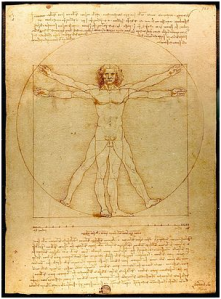It seems to be quite a coincidence how things happen in nature. For instance blooming flowers, reproduction of species, waveforms in the sea appears to be random and chaotic. There’s no one behind driving these forces. It’s driven by the nature itself. However further insights into these chaotic motions of nature, reveals something unbelievable. That is, things happen in nature according to a pattern.
Obviously nature organizes things in the most effective and easiest manner. Large formations are constructed by combining smaller parts. Yet these large formations are similar in shape to the smaller components. The fern leaf is the best example. The whole fern leaf was formed as a result of recursive placement of smaller leaflets. This phenomenon is known as Fractals – self similar patterns. Self-similar patterns can be seen everywhere. Rock formations, growth pattern of a leaf, surface of broccoli & Cauliflower, Fractal Mountains, lightning, and even clouds express this nature. The growth pattern of fractals are predictable, they are not just random. The following describes how.
It’s true that not everything in this world is fractal. However either fractal or non-fractal, they occur in a special sequence. This special sequence (or pattern) was known as the Fibonacci pattern. Finonacci pattern is a special number sequence known to have been discovered by Italian mathematician Leonardo Fibonacci 800 years ago. The sequence appears like 1,1,2,3,5,8,13,21,34,55,89,…….. Basically the next number is given by adding previous consecutive two numbers, that’s simple math.
The amazing thing is…. As the sequence grows, the proportion between any consecutive two numbers approaches to a constant. Numerically that’s 1.61803….. This ratio is known as the Golden ratio. Why? Because, almost every natural structure in this world displays this ratio. Even the human body is made with it.
 The Golden Proportion in the Body
The Golden Proportion in the Body
- The white line is the body’s height.
- The blue line, a golden section of the white line, defines the distance from the head to the finger tips.
- The yellow line, a golden section of the blue line, defines the distance from the head to the navel and the elbows.
- The green line, a golden section of the yellow line, defines the distance from the head to the pectorals and inside top of the arms, the width of the shoulders, the length of the forearm and the shin bone.
- The magenta line, a golden section of the green line, defines the distance from the head to the base of the skull and the width of the abdomen. The sectioned portions of the magenta line determine the position of the nose and the hairline.
Although not shown, the dimensions in the human face also follow the Golden ratio. Even the position of teeth!. Great thinkers like Leonardo Da Vinci knew this concept, and that’s why he drew the  Vitruvian Man, showing the proportions in human body. Most of his paintings were drawn with proportions in mind. Even the portrait of Mona Lisa. There’s no secret why he became a master designer. The ancient Greeks and Egyptians also, were aware of this and that’s why the Great pyramids and the Parthenon show proportions of Golden ratio.
Vitruvian Man, showing the proportions in human body. Most of his paintings were drawn with proportions in mind. Even the portrait of Mona Lisa. There’s no secret why he became a master designer. The ancient Greeks and Egyptians also, were aware of this and that’s why the Great pyramids and the Parthenon show proportions of Golden ratio.
More and more fascinating things about Fibonacci sequence reveal extraordinary things in nature. It gives birth to a mystical shape known as the Golden Spiral. The spiral is derived via the golden rectangle, a unique rectangle which has the golden ratio. When squared, it leaves a smaller rectangle behind, which has the same golden ratio as the previous rectangle. The squaring can continue indefinitely with the same result. No other rectangle has this trait. Following depicts the Golden Spiral. 
The golden spiral paves the way for certain shapes we see in nature. The Nautilus shell is an exact replica of this. Moreover, the patterns of a pineapple surface, the center heads of sunflower, snail shells, the sea waves, and even the galaxies!
More evidences in Fibonacci numbers include the branching patterns of plants, the number petals in flowers (there are 3 petal, 5 petal, 8 petal, 13 petal, 21 petal, 34 petal, 55 petal, 89 petal flowers), Pine cones, leaf arrangements, family trees of Honey-bees. A more fascinating example is our own hand.
- 2 hands each of which has …
- 5 fingers, each of which has …
- 3 parts separated by …
- 2 knuckles
In conclusion we know that nature accomplishes things in the most feasible manner, it does not know anything about Fibonacci numbers. In fact, it can be understood with the Fibonacci sequence. However it leaves us with an open question. Is it just a coincidence? …


Leave a comment